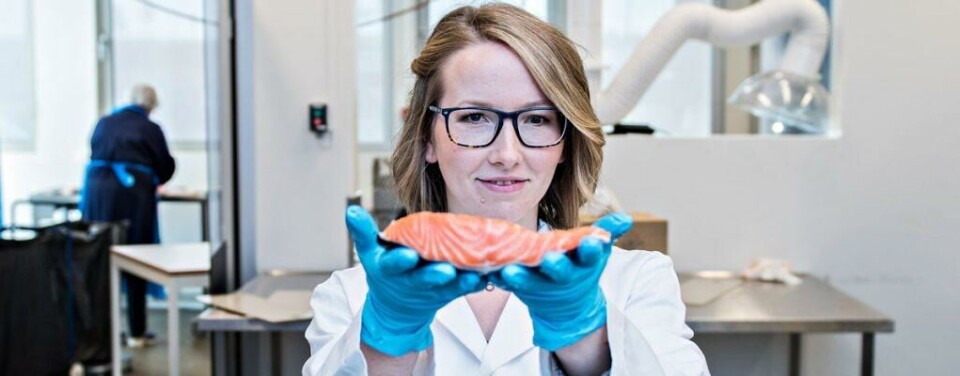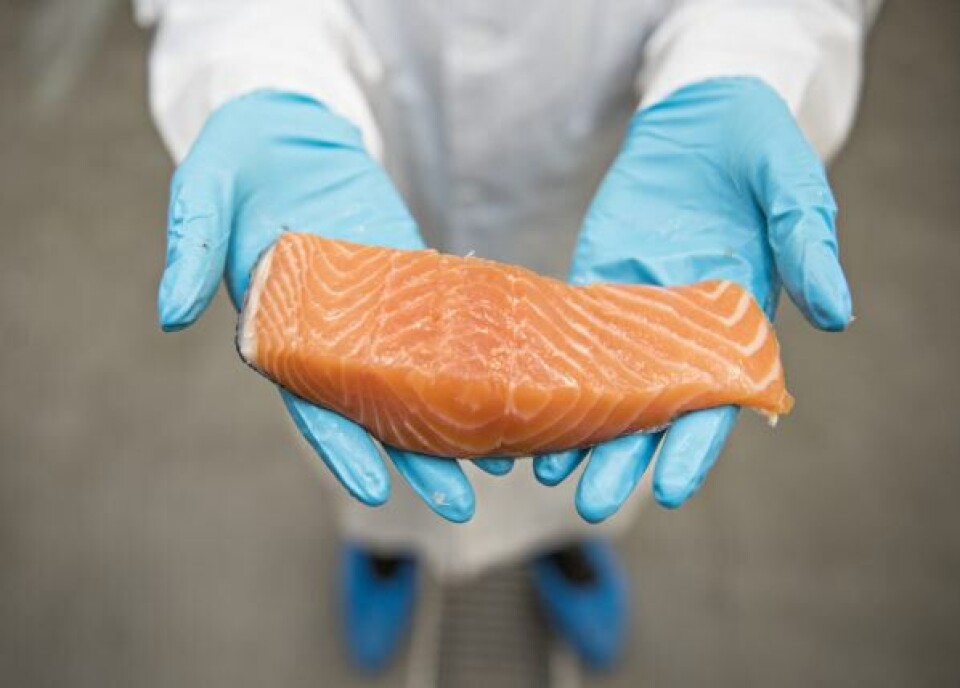
Breeding can provide more omega-3 in salmon
New findings by scientists at Norwegian research institute Nofima have revealed differences in the heritability of EPA and DHA in Atlantic salmon.
The world's limited supply of fish meal and fish oil means today's salmon feed consists of roughly 70 per cent plant proteins and oils. This has led to a decline in the level of the healthy omega-3 fatty acids in the fish.
Salmon can increase the amount of omega-3 fatty acids in their bodies, by converting shorter chained fatty acids from plants into longer chained marine omega-3 fatty acids.

This trait is probably linked to the fact that they spend the first part of their lives in fresh water. In fresh water, wild salmon need to produce marine omega-3 fatty acids themselves, because they do not have access to them in the food they eat. In salmon farming, EPA and DHA is provided in the feed throughout the whole lifecycle.
Major differences
Previous research has shown that some salmon families have higher levels of the healthy fatty acids in their muscle tissue than others. These kinds of differences can be used in breeding programmes to breed salmon that are better able to produce marine omega-3 fatty acids themselves.
Salmon contain many different omega-3 fatty acids. Siri Storteig Horn, a PhD student at Nofima, has studied the heritability of each individual fatty acid in the breeding population of egg producer SalmoBreed, owned by UK-based Benchmark. She has found major differences.
“The main marine omega-3 fatty acids in salmon are EPA and DHA. Our findings show that the muscle content of EPA has low heritability, while DHA has quite high heritability, estimated at 26 per cent. In other words, genes determine 26 per cent of the variation in fatty acid content in muscle tissue, meaning there is great potential in increasing this fatty acid through selective breeding. The results also indicated that a fish that has a high level of EPA does not necessarily have a high level of DHA,” said Horn.
Time-consuming and expensive
Her doctoral research is part of the project “Genomics of omega-3 in Atlantic salmon”. This four-year project is funded by the Research Council of Norway and has a budget of NOK 10 million. The project is in collaboration with the Norwegian University of Life Sciences (NMBU), University of Southampton and SalmoBreed.
It is currently very time-consuming and expensive to measure the fatty acid composition of the high number of individuals needed for breeding. Scientists at Nofima are working to develop a new and faster measurement technique.
“A new rapid measurement method will benefit salmon breeding companies if they want to select fish with increased levels of marine omega-3,” says Horn.
Selective breeding
The next step in the doctoral work is to determine which genes and gene variants influence the fatty acid composition of salmon muscle. This will reveal about the physiological processes that affect the fatty acid composition in muscle, and contribute to more efficient implementation in breeding programmes.
“We know that this is a heritable trait, meaning it is possible to increase omega-3 content through selective breeding. To learn how omega-3 content is regulated, we need to study which genes are involved. Our data show that the production of marine omega-3 fatty acids and their deposition are two different traits”, said Horn.























































